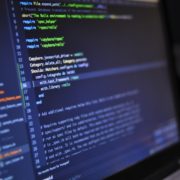#IPBday – The setbacks of the mobile phone between the first patent and the placing on the market.
The pioneer patent on mobile phone technologies is that of Mr. Martin COOPER (MOTOROLA) filed on October 17, 1973 in the USA and issued September 16, 1975.
The patent had been extended interaallia to Germany and the United Kingdom, but surprisingly does not seem to have been extended to France. Would France have been a less interesting market than Denmark or Spain at that time?
The inventor Martin COOPER was the first to make a mobile phone call on April 3, 1973 in New York at 6th Avenue, which today seems like a trivial thing. (The experts would immediately ask the question of disclosure before filing that is legally problematic, but this is not the subject). For the anecdote, he called his competitor Joel Engel of BELL LABS, to show him who was the most advanced.
MOTOROLA (COOPER’s employer and patentee) is known for having a multitude of pioneering patents that have been at the basis of the evolution of mobile communications technologies. Many subsequent patents were dependent on Motorolla patents.
Hoowever, the technology took a long time to be available on the market, and more time to be in mass production.
In the US, the Federal Communications Commission (FCC) regulated frequency usage in 1983. On September 21, 1983, the FCC approved the first commercially available Motorola DynaTAC 8000X. It weighed 800 g and measured 33 cm long. His price was about $ 4,000 and his memory was limited to 30 phone numbers. Its communication autonomy was less than an hour and its loading time was 10 hours.
Ten more years were needed to arrive at a mass production of the phone.
The size, weight and performance of the phone have of course evolved considerably since then.
In the same way, you may have a breakthrough innovation that will change the paradigms so much that we will wonder later how could we do without this invention. It is crutial not to make a destructive disclosure of novelty and to protect your innovation in order to reap the fruits thereof.



